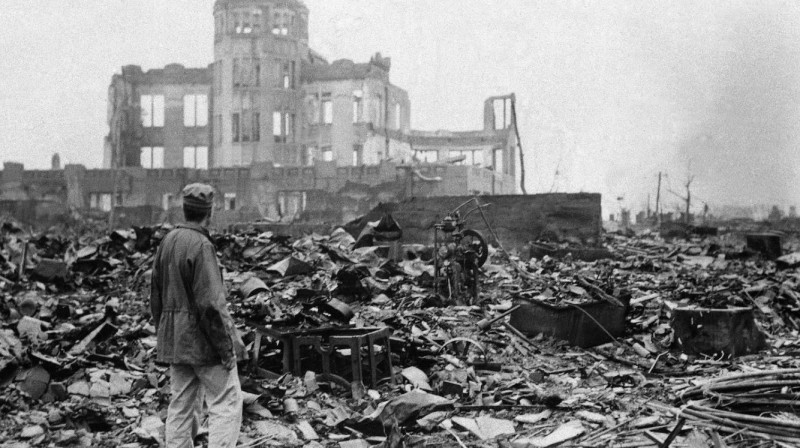
Introduction
The dropping of the atomic bombs on Hiroshima and Nagasaki in 1945 remains one of the most controversial events in human history. These bombings, carried out by the United States during World War II, had far-reaching consequences that continue to shape our understanding of warfare, ethics, and the use of nuclear weapons. In this article, we will delve into the background of Hiroshima and Nagasaki, the development of the atomic bombs, the decision to use them, the bombings themselves, their aftermath, controversies surrounding the bombings, and the lasting legacy of this tragic chapter in history.
Background of Hiroshima and Nagasaki
Hiroshima and Nagasaki were two cities located in Japan, both of which played significant roles in the country's industrial and military infrastructure during World War II. Hiroshima, a bustling port city, was a key center for military operations and housed numerous military installations. Nagasaki, an important industrial hub, had several factories that produced military equipment and provided resources for Japan's war effort.
The Manhattan Project and the Atomic Bombs
The development of the atomic bombs was part of a top-secret research project known as the Manhattan Project. Launched in 1939, the Manhattan Project aimed to harness the power of nuclear fission to create weapons of unprecedented destruction. Led by scientists and engineers from various countries, including the United States, the project made significant progress in refining the technology required to build atomic bombs.
Decision to Use Atomic Bombs
As World War II raged on, the Allied forces, primarily the United States, were determined to bring the war to a swift end. The Japanese Empire had proven to be a formidable adversary, and the prolonged conflict had resulted in immense human suffering and loss of life. The decision to use atomic bombs was a contentious one, driven by a combination of military objectives, the desire to save lives, and a display of overwhelming force to compel Japan's surrender.
The Bombing of Hiroshima
On August 6, 1945, the United States dropped an atomic bomb codenamed "Little Boy" on Hiroshima. The bomb detonated approximately 1,900 feet above the city and unleashed a devastating explosion, releasing an immense amount of energy in the form of heat, blast, and radiation. The impact was catastrophic, resulting in the immediate deaths of an estimated 70,000-80,000 people, with many more succumbing to injuries and radiation sickness in the following weeks and months.
The Aftermath of the Hiroshima Bombing
The bombing of Hiroshima left the city in ruins, with large areas reduced to rubble. The human toll was staggering, with thousands of lives lost and countless others forever impacted by the physical and psychological scars of the bombing. The long-term effects of radiation exposure led to a significant increase in cancer rates, birth defects, and other health complications among survivors and their descendants.
The Bombing of Nagasaki
Just three days after the Hiroshima bombing, on August 9, 1945, the United States dropped a second atomic bomb named "Fat Man" on Nagasaki. The devastation caused by the bomb was similar to that of Hiroshima, resulting in an estimated death toll of 40,000-75,000 people. The city's infrastructure was severely damaged, and the impact of radiation on the population led to a prolonged humanitarian crisis.
The Aftermath of the Nagasaki Bombing
The aftermath of the Nagasaki bombing mirrored that of Hiroshima, with widespread destruction, loss of life, and long-term health consequences for the survivors. The bombings of both cities shocked the world and marked a turning point in the use of atomic weapons, leading to a reevaluation of the ethics and consequences associated with their deployment.
Controversies and Debates
The dropping of the atomic bombs on Hiroshima and Nagasaki sparked intense debates and controversies that persist to this day. Some argue that the bombings were necessary to hasten Japan's surrender, thus saving lives that would have been lost in a prolonged invasion. Others criticize the bombings as unnecessary acts of mass destruction that targeted civilian populations, resulting in immense suffering and loss of innocent lives.
Legacy and Lessons Learned
The bombings of Hiroshima and Nagasaki had a profound and lasting impact on the world. The destructive power of nuclear weapons became evident, raising urgent questions about their use, proliferation, and the need for international cooperation to prevent future catastrophic events. The bombings led to the establishment of arms control treaties and a renewed focus on diplomacy, disarmament, and nonproliferation efforts.
Conclusion
The dropping of the atomic bombs on Hiroshima and Nagasaki in 1945 marked a tragic chapter in human history. The devastation caused by these bombings continues to evoke strong emotions and fuel discussions about the morality, necessity, and long-term implications of using nuclear weapons. As we reflect on this dark period, it is crucial to remember the profound human cost and strive for a world free from the threat of nuclear warfare.
SC Grants Ashish Mishra Extended Interim Bail Amidst Lakhimpur Kheri Violence
Remembering the Mumbai Train Bombing: Honoring the Victims and Reflecting on Resilience
Massive Strange Shelf Cloud Appears In Haridwar, Details Inside